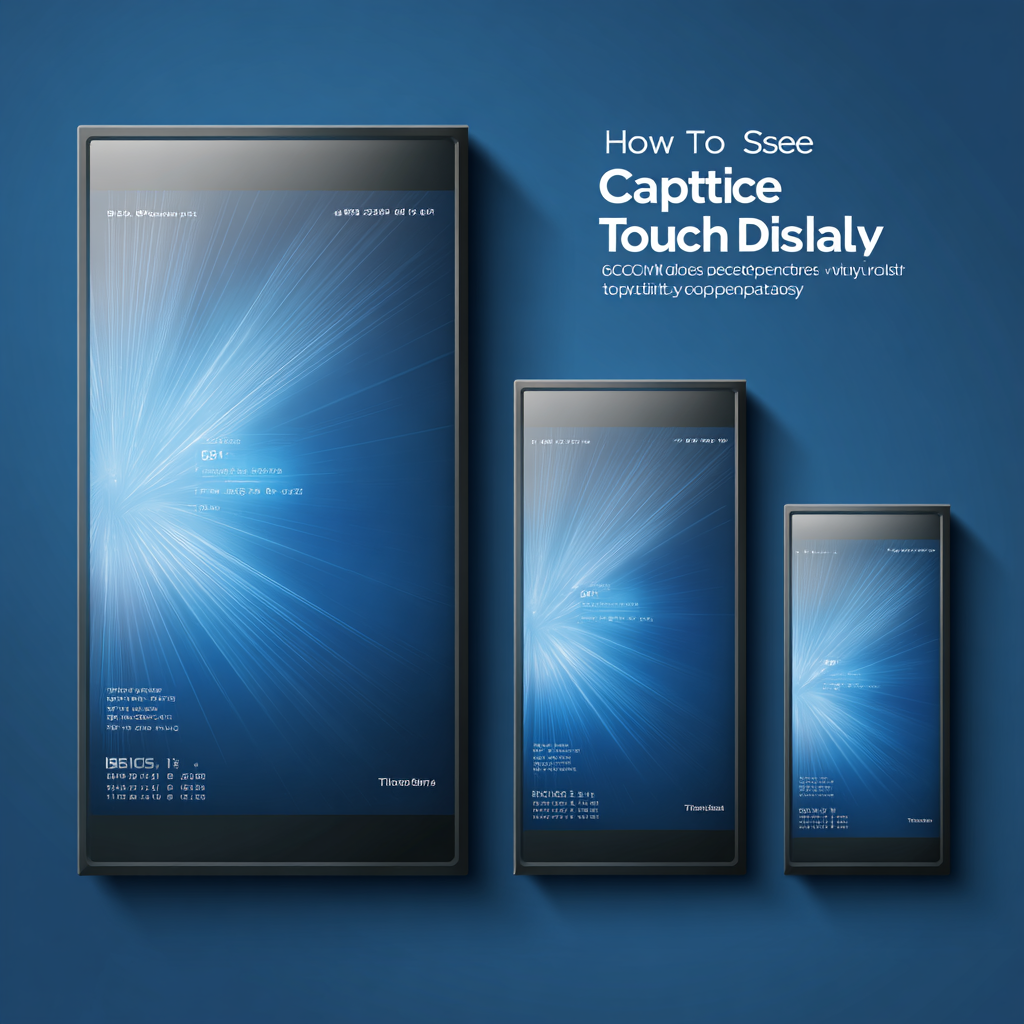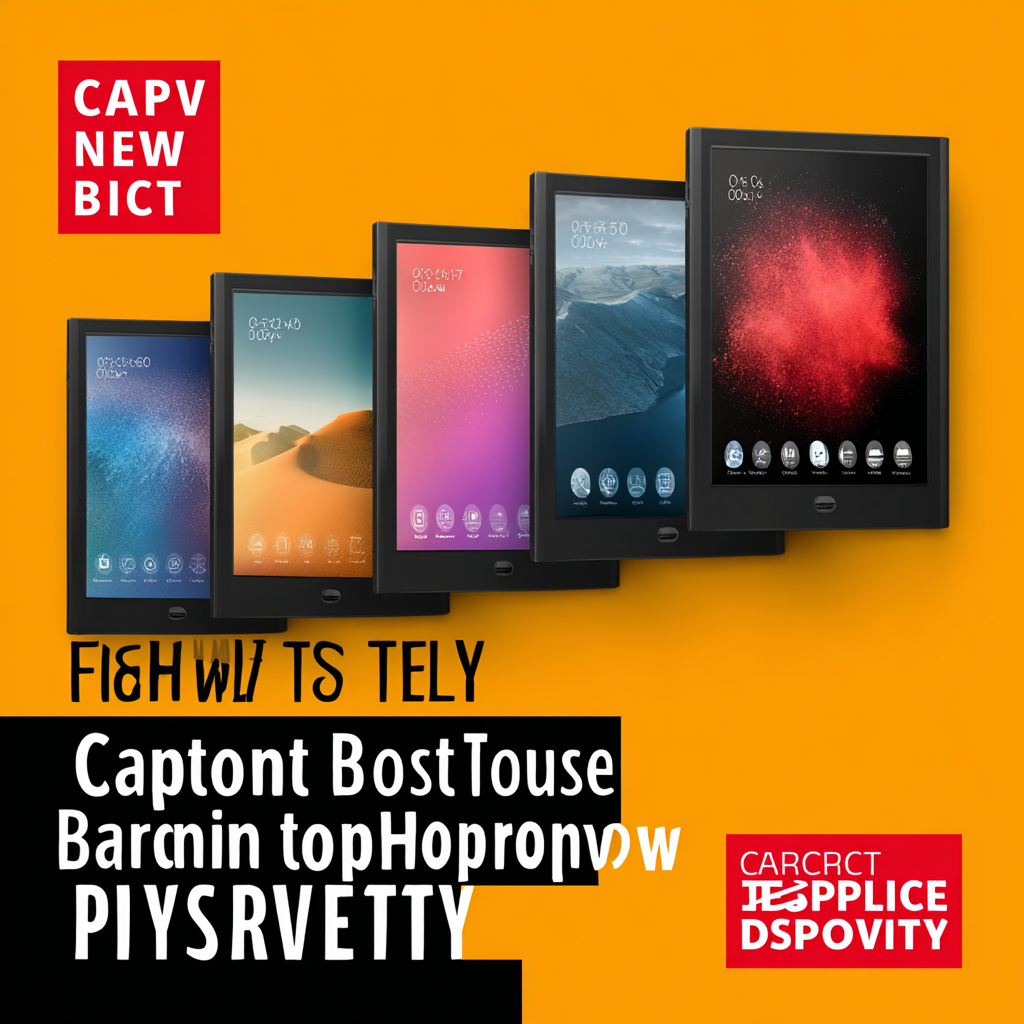In recent years, the demand for effective and responsive user interfaces has surged, positioning the Capacitive Touch Screen Display at the forefront of technological advancements across various industries. According to a report by MarketsandMarkets, the global market for touch screens is projected to reach USD 64.6 billion by 2025, with capacitive technology accounting for a significant share due to its superior sensitivity and multi-touch capabilities. As projects increasingly require intuitive interaction, selecting the best capacitive touch screen display has become critical for developers and designers alike.
When considering the optimal capacitive touch screen display for a specific project, several factors must be taken into account, including screen size, resolution, and durability. Research from Grand View Research indicates that the consumer electronics segment is a major driver of this growth, fueling the need for high-performance displays that can withstand rigorous usage while maintaining aesthetic appeal. As industries incorporate more touchscreen technology in applications ranging from mobile devices to industrial controls, understanding the nuances of capacitive displays will enable stakeholders to make informed decisions that enhance user experience and project success.

When selecting a capacitive touch screen display for your project, it's essential to first understand the specific requirements of your application. Consider factors such as the environment in which the display will be used. For instance, a display intended for outdoor usage must have high brightness and be resistant to glare, while a screen for indoor use may prioritize touch sensitivity and resolution. Additionally, assess the operating temperature range, as devices used in extreme conditions will need to have components that can withstand such environments.
Another critical aspect is the interaction style. Determine whether your project will require multi-touch capabilities or single touch, as this will influence the type of capacitive technology you'll need. It's also vital to think about the interface; whether you need HDMI, USB, or other outputs can dictate compatibility with your existing hardware. Lastly, consider the size and aspect ratio of the display, as these will directly impact user experience and design integration. Each of these factors plays a significant role in ensuring that the chosen display meets the demands of your project effectively.
 When selecting a capacitive touch screen display for your project, evaluating display size and resolution options is crucial. The size of the display can significantly affect user interaction and overall experience. Larger displays offer more content visibility and can enhance usability, especially for applications that require multi-touch gestures or detailed graphics. However, it’s essential to balance screen size with the intended environment and practical use; a display that’s too large may not fit well in compact settings, while a smaller screen could limit interaction.
When selecting a capacitive touch screen display for your project, evaluating display size and resolution options is crucial. The size of the display can significantly affect user interaction and overall experience. Larger displays offer more content visibility and can enhance usability, especially for applications that require multi-touch gestures or detailed graphics. However, it’s essential to balance screen size with the intended environment and practical use; a display that’s too large may not fit well in compact settings, while a smaller screen could limit interaction.
Resolution is another critical factor to consider. Higher resolution displays provide sharper images and text, which can improve the usability of your interface and make it more visually appealing. For applications where detail is paramount, such as in medical or industrial settings, investing in a higher resolution screen can lead to better performance. Conversely, if the content is primarily text-based, a lower resolution may suffice while keeping costs manageable. Ultimately, choosing the right combination of display size and resolution will depend on your specific project requirements, user needs, and budget constraints.
When selecting a capacitive touch screen display for your project, key features relating to touch sensitivity and durability are critical. Touch sensitivity determines how precisely and responsively the screen detects inputs. Look for displays that support multi-touch functionality, allowing multiple fingers to interact with the screen simultaneously. Furthermore, ensure the display has a low activation threshold, meaning it registers inputs from lighter touches. This is especially important in applications where user experience is paramount, such as interactive kiosks or handheld devices.
Durability is equally essential, particularly in environments that are prone to wear and tear. Choose screens constructed from high-quality materials, such as Gorilla Glass or similar hardened materials that can withstand scratches and impacts. Additionally, consider the IP rating of the display, which indicates its resistance to dust and moisture. A display with a higher IP rating is better suited for outdoor use or in industrial settings where exposure to harsh conditions is common. By prioritizing these features, you can ensure a robust and responsive user interface for your project.
When choosing a capacitive touch screen display for a project, understanding the different types of capacitive technologies is key to making an informed decision. The most common technologies are projected capacitive (PCAP) and surface capacitive. According to a report by Research and Markets, the projected capacitive touch screen market is expected to grow at a compound annual growth rate (CAGR) of 10.1% from 2021 to 2026, highlighting its increasing popularity in devices requiring high sensitivity and multi-touch capabilities. PCAP screens typically offer better durability and responsiveness compared to their surface counterparts, making them ideal for applications where users demand a high-quality tactile experience.
Additionally, advanced technologies like in-cell and on-cell capacitive screens are emerging, offering integration of touch sensors within the display panel itself. A forecast by IndustryARC projects the global touch screen controller market to reach $3.5 billion by 2026, driven partly by the adoption of these innovative display technologies. In-cell and on-cell options provide improved visual clarity and reduce the number of layers in the display, leading to thinner designs and better touch sensitivity. By evaluating these technologies and their respective benefits, developers can choose the most suitable capacitive touch screen for their projects, balancing cost, performance, and user experience effectively.
| Technology Type | Sensitivity | Multi-Touch Support | Durability | Cost | Visibility in Sunlight |
|---|---|---|---|---|---|
| Projected Capacitive | High | Yes | High | Medium | Good |
| Surface Capacitive | Medium | Limited | Medium | Low | Fair |
| Self-Capacitive | Low | No | Low | Very Low | Poor |
| Glass-Film Technology | High | Yes | Very High | High | Excellent |
When selecting a capacitive touch screen display for your project, budget considerations play a crucial role in making the right choice. Touch screen displays come in various price ranges, and understanding your project’s financial limitations is essential. High-quality displays may offer better durability, responsiveness, and features but will also come at a higher cost. On the other hand, budget options can still meet basic requirements but might lack advanced functionalities or longevity.
Tips: Always prioritize essential features first. Determine which aspects, such as display size, resolution, and sensitivity, are non-negotiable for your project. This will help you narrow down your options without overspending. Additionally, consider the total cost of ownership, which includes installation, maintenance, and potential replacement costs.
Another aspect to consider is supplier reliability. Sometimes, a lower upfront cost can lead to more expenses later if the product is unreliable. Investing in a reputable supplier who provides support and warranty can save you money in the long run. Balancing quality and cost is key to choosing the best display that fits your project's budget.







